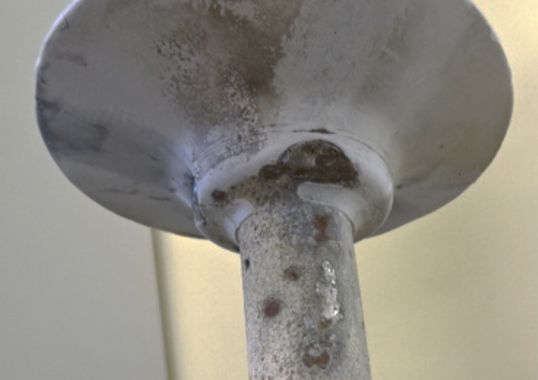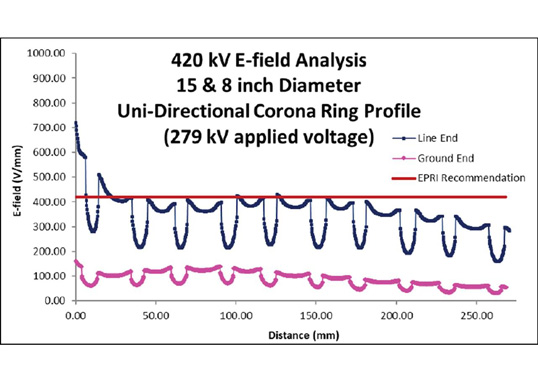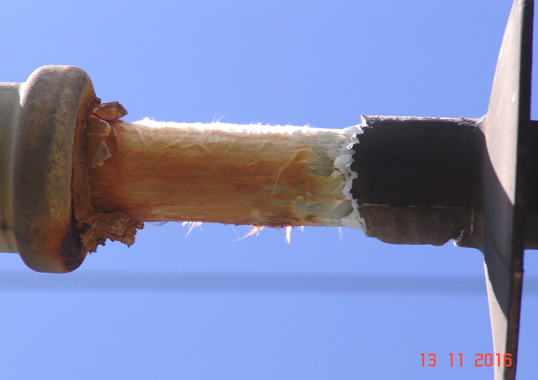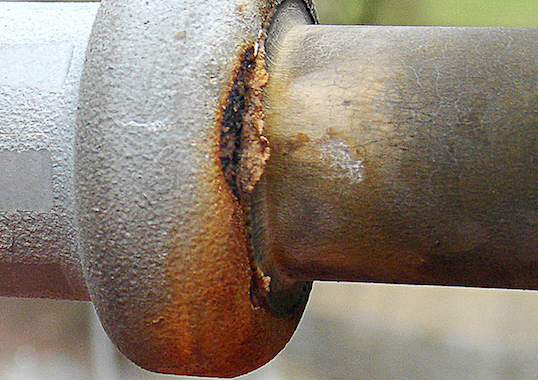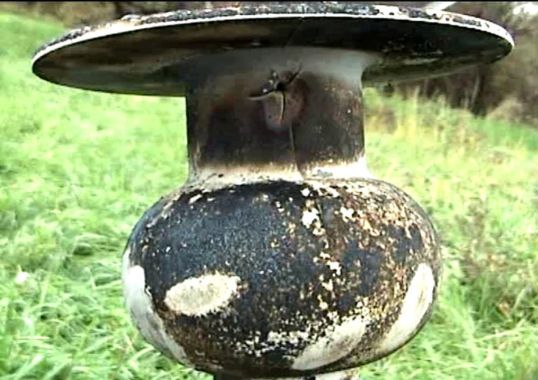[inline_ad_block]
Currently, CIGRE WG D1.61 is dealing with the topic of optical detection and measurement of corona. Several ultraviolet (UV) cameras are now available commercially (both night vision and daylight types) and there is ongoing discussion about whether optical detection of corona constitutes a measurement or is rather only another form of visualization of a critical component.
Of course, what would be most desirable for system operators is that a camera system measure corona intensity and provide a ‘red’ or ‘green’ signal corresponding to the potential for risk of discharges. However, the diversity of possible corona sources and the impact of environmental variables such as humidity does not allow for this type of a simple ‘red/green’ conclusion. Moreover, while permanent corona discharge on metallic hardware might cause only high frequency disturbances, an insulation material in that same location can degrade in a short time.
In general, based on years of experience with the different available technologies, corona discharges from unsuitable design of insulator strings should not normally occur. Yet the reality is that even insulators in service at lower transmission voltages now encounter these types of problems due to intense competition among suppliers and pressure on cost reduction. For example, the tension string shown in Fig. 1 was put into service on a two-phase AC system (145 kV and 16.7 Hz).

CLICK TO ENLARGE
Even in fair weather, this string caused permanent corona discharges with such intensity that they could affect electronic control of the substation. Several insulators were then removed for visual inspection. As expected, the ground-side that was free of corona showed no damage. But signs of degradation were evident on the energized side (see Fig. 3).
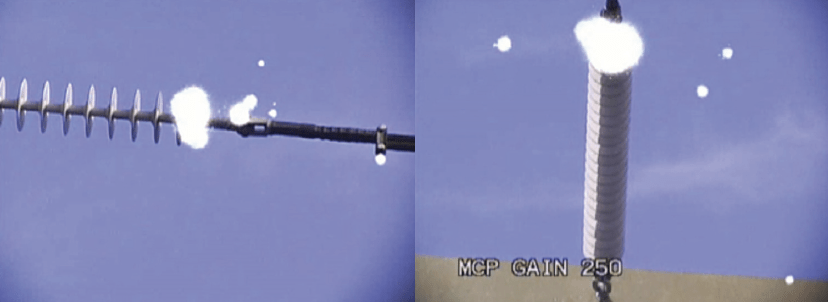
CLICK TO ENLARGE
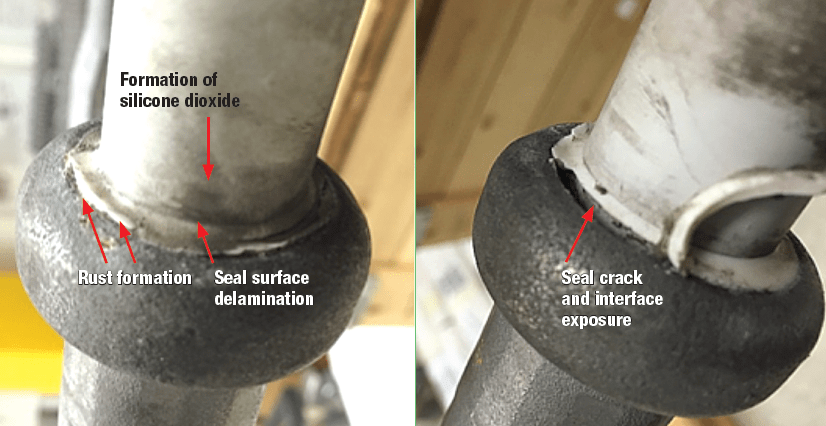
CLICK TO ENLARGE
Under typical service conditions, corona discharges create acids and chemical radicals that attack both the galvanization and the polymeric material. Depending on intensity, damage can appear after only a few months (see Fig. 3). In particular, the seal design in this example was especially vulnerable to damage from corona discharges since the triple point is close to the seal and the materials used are only low-filled polymers.
As a remedial measure, all insulators were removed and those found not to have suffered critical damage were equipped with corona rings (Fig. 4) and put back into service. Subsequent corona measurement confirmed the success of this solution.

CLICK TO ENLARGE
Use of daylight UV cameras is convenient because measurements can be performed during the day. However, the shape of discharges cannot always be identified due to the non-direct means of detecting photons generated by corona. By contrast, night vision cameras allow such discharges to be more easily observed by illuminating them.
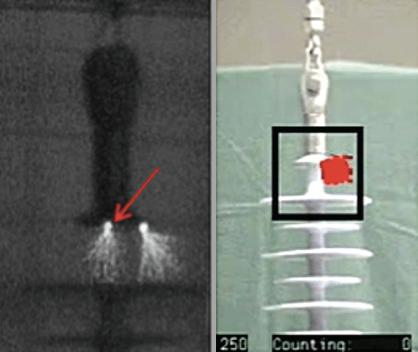
CLICK TO ENLARGE
Comparison of a digital daylight camera and two analogous night vision cameras was conducted in a controlled laboratory setting. Care was taken to ensure that the test object as well as the distance between it and the different cameras was representative of what one would find in the field. Measurements were then performed under dry and wet conditions with the specimen insulator fully hydrophobic.
A similar trend was found for the digital and the analogous cameras under dry and wet conditions. But due to amplification of photon detection, the digital camera was able to identify discharges at lower inception voltage than was possible with the analogous cameras (see Fig. 5).
The digital camera in this experiment has a scan frequency of 30 Hz and therefore images can be missed in the case of highly variable discharges. Still, this problem can be overcome if the camera has a long-term integration mode.
Overall, these kinds of cameras are valuable tools to help identify corona problems that can adversely impact a power network. Further research, this time under DC voltage, is planned and the eventual findings of this Working Group are highly anticipated by utilities and other camera users.
Much appreciation for their support of these tests measurements to colleagues at the University of Zittau in Germany and EGU HV Laboratory in Prague, Czech Republic.
Dr. Frank Schmuck



